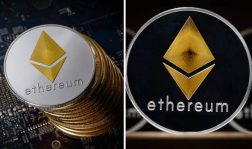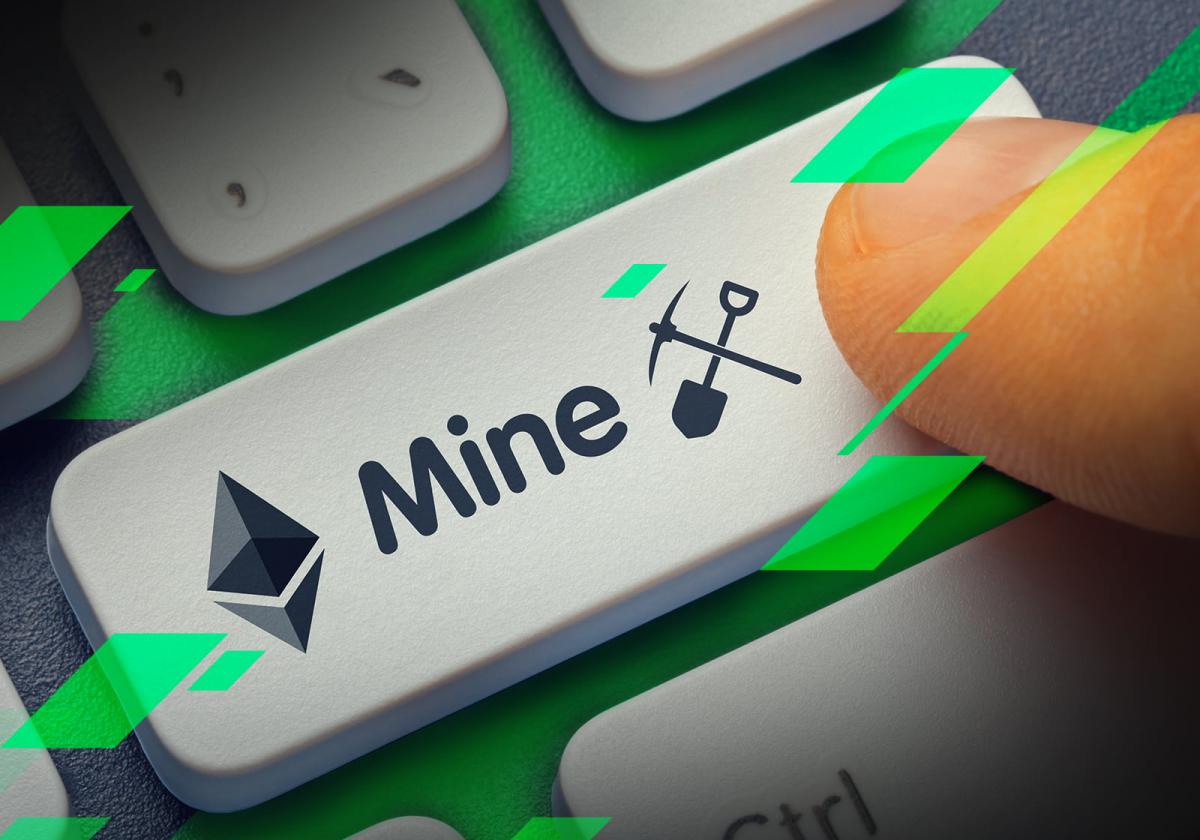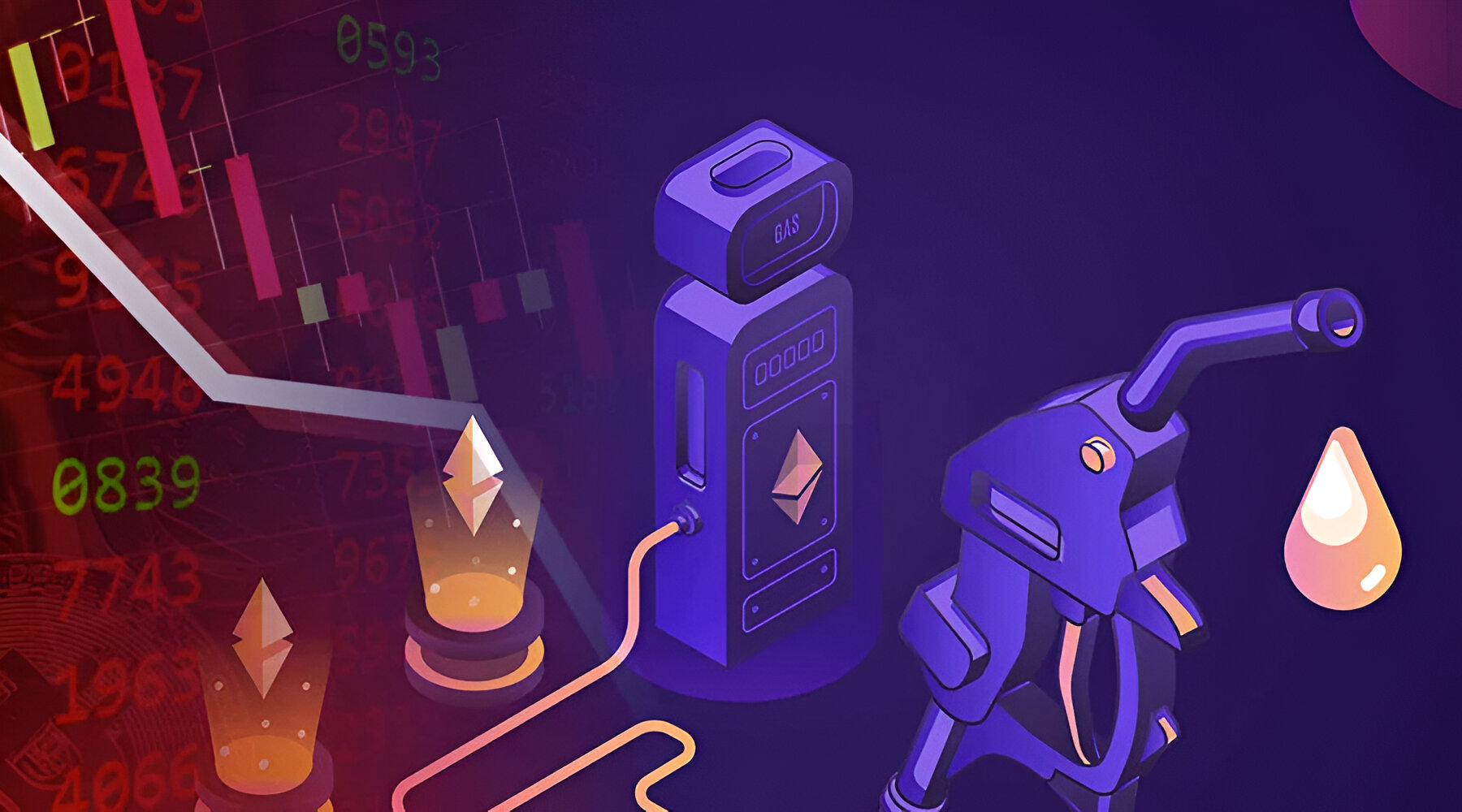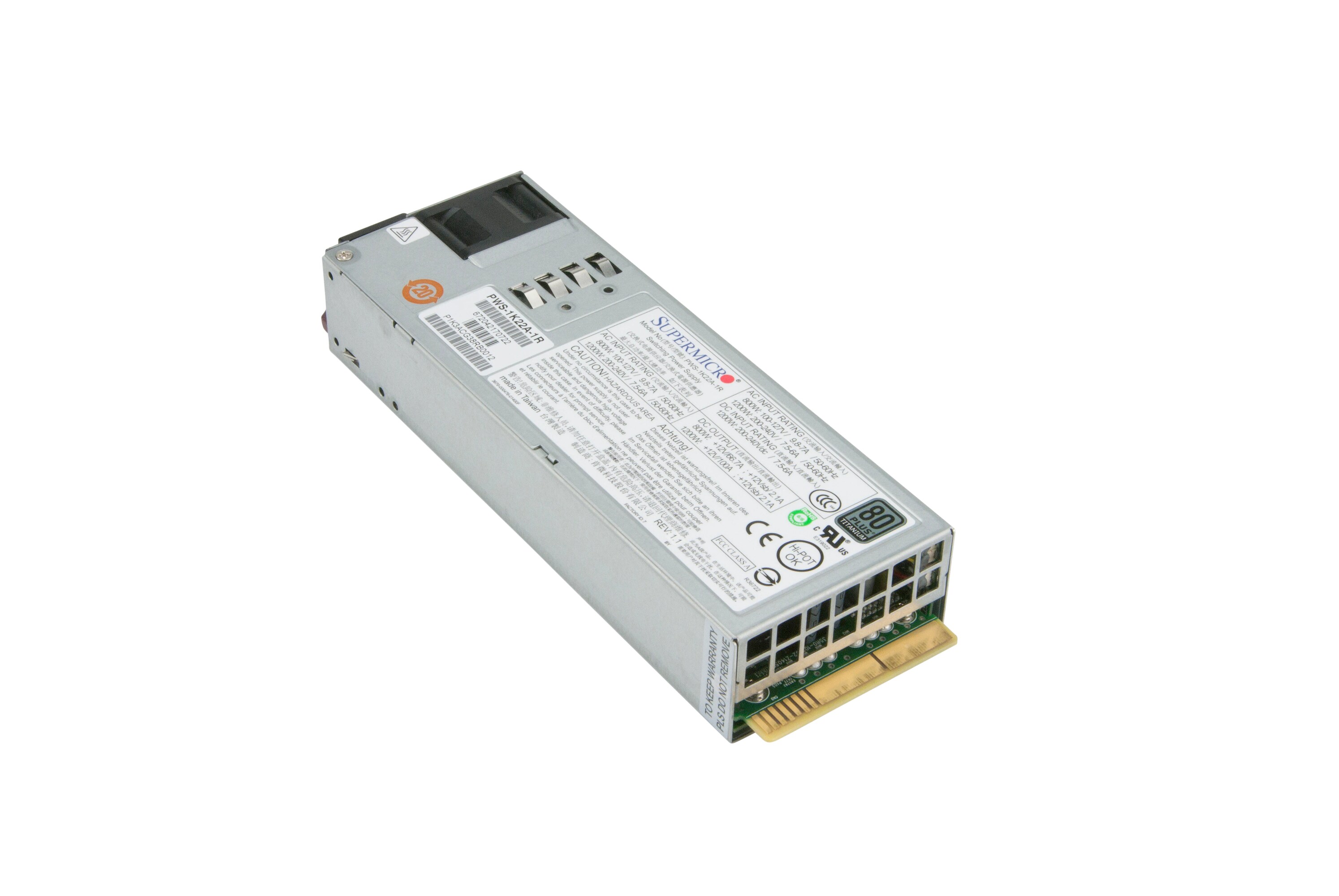Introduction
Welcome to the world of Ethereum mining! If you’re new to this exciting and lucrative endeavor, you’ve come to the right place. Ethereum, a decentralized digital currency, has gained immense popularity in recent years, catching the attention of many investors and enthusiasts.
In simple terms, Ethereum mining involves the process of validating and adding transactions to the Ethereum blockchain, thus ensuring the integrity and security of the network. But mining Ethereum is not just a hobby; it’s a competitive and potentially profitable venture for those who are willing to invest time, effort, and resources.
Before diving into the details of Ethereum mining, it’s important to understand how it works. Unlike traditional currencies, which are controlled and regulated by governments or financial institutions, Ethereum operates on a decentralized platform called the blockchain. This cutting-edge technology enables secure and transparent transactions, without the need for intermediaries.
So, how does Ethereum mining actually work? Miners use powerful computers to solve complex mathematical problems, called hashes, in order to validate and record new transactions on the Ethereum blockchain. In return for their computational effort, miners are rewarded with Ether, the native cryptocurrency of the Ethereum network.
Now, let’s talk about the hardware requirements for mining Ethereum. Mining Ethereum can be resource-intensive, so having the right equipment is crucial. You’ll need a powerful graphics processing unit (GPU) and sufficient memory (RAM) to handle the complex calculations involved in mining. Additionally, a reliable internet connection and a suitable cooling system are essential to keep your mining rig running smoothly.
Aside from hardware, you’ll also need specific software to mine Ethereum. There are various mining software options available, such as Claymore’s Dual Miner, Ethminer, and CGMiner, that you can choose based on your preferences and compatibility with your hardware.
Another important aspect of Ethereum mining is joining a mining pool. Mining pools allow miners to combine their computing power and work together to solve hashes more efficiently. By joining a pool, you increase your chances of earning rewards, although you’ll have to share them with other pool members.
Before you start mining Ethereum, it’s important to calculate your potential earnings. Keep in mind that mining profitability fluctuates based on various factors, such as the price of Ether, mining difficulty, and electricity costs. Online calculators can help estimate your potential earnings based on these variables.
In the next sections, we’ll discuss the factors that affect mining profitability, the operating costs you’ll need to consider, and potential risks and challenges associated with Ethereum mining. So, buckle up and get ready to embark on a fascinating journey into the world of Ethereum mining!
What is Ethereum mining?
Ethereum mining is the process of validating and adding transactions to the Ethereum blockchain. It plays a crucial role in the security and stability of the network. Unlike traditional currencies, Ethereum operates on a decentralized platform called the blockchain, which relies on miners to confirm and record transactions.
Miners use powerful computers to solve complex mathematical problems, known as hashes, in order to validate new transactions. These calculations require significant computational power, and miners compete with each other to solve them and earn rewards in the form of Ether.
But what exactly is Ether? Ether (ETH) is the native cryptocurrency of the Ethereum network. It serves as a digital asset that can be used to pay for goods and services, as well as a store of value. Miners are rewarded with a certain amount of Ether for each block they successfully mine.
The mining process begins with a miner assembling a group of pending transactions into a block. This block contains a cryptographic hash that serves as a unique identifier. Miners then attempt to find a hash that meets specific criteria, known as the mining difficulty. The difficulty adjusts automatically based on the total computational power of the network, ensuring that new blocks are added to the blockchain at a consistent rate.
Once a miner successfully finds the correct hash, they can add the block to the blockchain and claim their reward. However, it’s important to note that not every miner will successfully mine a block. It requires a combination of computational power, luck, and efficient mining strategies to be successful.
Aside from the financial reward, mining also helps ensure the security and decentralization of the Ethereum network. Each block contains a reference to the previous block, creating an unbreakable chain of transactions. This makes it extremely difficult for anyone to tamper with the ledger or manipulate the system for their own gain.
Ethereum mining is a competitive endeavor, with miners constantly striving to improve their mining setups to maximize their chances of earning rewards. It requires a significant investment in hardware and electricity to stay competitive in the market. However, with the right equipment and strategy, mining Ethereum can be a potentially profitable venture.
In the next sections, we’ll delve deeper into the hardware and software requirements for mining Ethereum, as well as the factors that can affect mining profitability. So, let’s continue our exploration of the fascinating world of Ethereum mining!
How does Ethereum mining work?
Ethereum mining is a complex process that involves solving computational puzzles to validate and record transactions on the Ethereum blockchain. Let’s dive into the details of how Ethereum mining works:
1. Transaction Validation: Miners collect pending transactions from the network and verify their validity. These transactions are then grouped into a block, which serves as a unit of data in the Ethereum blockchain.
2. Hashing: Once a block is formed, miners use powerful computer hardware to solve a complex mathematical problem called a hash. A hash is a cryptographic function that takes the block’s data and produces a unique output. Miners continuously change the input data, known as a “nonce,” until they find a hash that meets certain criteria.
3. Mining Difficulty: The Ethereum network adjusts the mining difficulty dynamically to ensure that a new block is added to the blockchain approximately every 15 seconds. The difficulty level is recalibrated using a sophisticated algorithm that takes into account the total computational power of the network.
4. Finding the Correct Hash: Miners strive to find a hash that meets the difficulty requirements by trying different nonces. This process is computationally intensive and requires significant computational power to complete successfully. Miners may work individually or join mining pools to combine their resources and increase their chances of finding the correct hash.
5. Block Addition: Once a miner successfully finds a hash that meets the difficulty criteria, they broadcast their solution to the network. Other miners verify the solution, ensuring its accuracy and integrity. If the solution is valid, the block is added to the Ethereum blockchain, and the miner is rewarded with Ether.
6. Block Rewards: Miners are incentivized to participate in the network by receiving block rewards. Currently, the reward for mining a block is 2 Ether, but this value is subject to change due to the ongoing development of Ethereum and its transition to Ethereum 2.0. Additionally, miners may also receive transaction fees included in the block they mine.
7. Blockchain Consensus: The addition of each new block to the Ethereum blockchain strengthens its security and establishes network consensus. The decentralized nature of the blockchain ensures that multiple miners are processing transactions simultaneously, enhancing the overall trust and reliability of the network.
Ethereum mining is a resource-intensive and competitive process. Miners must continually upgrade their hardware to stay competitive and have a chance at mining blocks. The profitability of mining is influenced by various factors, including the price of Ether, electricity costs, hardware efficiency, and network difficulty.
In the upcoming sections, we will explore the hardware and software requirements for mining Ethereum, and delve into the factors that can impact mining profitability. So, let’s continue our journey into the fascinating world of Ethereum mining!
Hardware requirements for mining Ethereum
Mining Ethereum requires powerful computer hardware to handle the computational demands of solving complex mathematical problems. Here are the key hardware components you’ll need:
1. Graphics Processing Unit (GPU): A high-performance GPU is essential for Ethereum mining as it performs the majority of the computational work. GPUs are designed for parallel processing and excel at handling the mathematical calculations required for mining. Popular choices for Ethereum mining include GPUs from Nvidia (such as the GeForce RTX series) and AMD (such as the Radeon RX series).
2. Random Access Memory (RAM): Sufficient RAM is necessary to support the mining software and handle the computational workload. Typically, a minimum of 8GB or more is recommended for optimal mining performance.
3. Power Supply Unit (PSU): A reliable PSU is crucial to ensure stable power delivery to your mining rig. Depending on the number of GPUs and other components, you’ll need a PSU with enough wattage to support your mining setup. It’s important to calculate the total power consumption of your rig to determine the appropriate PSU wattage.
4. Motherboard: Choose a motherboard that supports multiple GPUs and has sufficient PCIe slots. This will allow you to expand your mining rig in the future if desired.
5. Storage: A solid-state drive (SSD) provides faster data access and improves the overall performance of your mining rig. However, a regular hard drive (HDD) can also suffice if budget is a concern.
6. Cooling System: Mining generates a significant amount of heat, so a robust cooling system is essential to prevent overheating and ensure optimal performance. Consider using multiple fans or a specialized cooling solution like liquid cooling to maintain appropriate temperatures.
7. Internet Connection: A reliable and stable internet connection is necessary for mining as it allows your mining rig to communicate with the Ethereum network and receive updates.
When selecting hardware for Ethereum mining, consider factors such as performance, power consumption, and cost efficiency. It’s important to strike a balance between upfront investment and long-term profitability.
It’s worth noting that mining hardware evolves rapidly, and new, more efficient models are regularly released. Stay updated with the latest developments in the mining hardware market to make informed decisions about upgrading or expanding your mining rig.
In the next section, we’ll explore the software requirements for mining Ethereum. So, let’s continue our journey into the world of Ethereum mining!
Software requirements for mining Ethereum
In addition to the hardware components, mining Ethereum also requires specific software to ensure efficient and stable mining operations. Here are the essential software requirements for mining Ethereum:
1. Ethereum Mining Software: There are several mining software options available, each with its own features and compatibility. Some popular choices include Claymore’s Dual Miner, Ethminer, CGMiner, and PhoenixMiner. These software programs enable you to connect your mining rig to the Ethereum network and start mining. It is crucial to select software that is compatible with your operating system and hardware configuration.
2. Operating System: Most mining software is compatible with Windows, Linux, and certain versions of macOS. You’ll need to choose an operating system that is compatible with your mining software and offers stability and ease of use. Windows is often preferred by many miners due to its broad compatibility and user-friendly interface.
3. Mining Pool Software: If you decide to join a mining pool, you’ll need software that allows you to connect to the pool and contribute your computational power. The mining pool software handles the distribution of work and facilitates communication between miners and the pool’s server. Popular mining pool software includes Ethpool, Ethermine, and F2Pool.
4. Wallet Software: To receive and store the Ether you mine, you’ll need a digital wallet specifically designed for Ethereum. Wallets come in various forms, such as desktop wallets, online wallets, hardware wallets, and mobile wallets. Research and choose a wallet that offers security, convenience, and compatibility with your preferred devices.
5. Mining Monitoring Software: Monitoring software helps you keep track of the performance of your mining rig and provides real-time updates on mining statistics, including hash rate, temperature, and power consumption. Tools like MSI Afterburner, HWiNFO, or GPU-Z can assist in monitoring and optimizing your mining setup.
6. Anti-virus and Firewall: Properly securing your mining rig is crucial to mitigate the risk of malware or hacking attempts. Install reliable anti-virus software and configure your firewall to protect your mining operation from potential threats.
It’s important to keep your software up to date to ensure compatibility with the latest Ethereum updates and security patches. Regularly check for software updates or new versions released by developers to take advantage of performance improvements and bug fixes.
Lastly, consider joining mining communities and forums to stay informed about the latest software recommendations and troubleshooting tips. Sharing knowledge and experiences with other miners can help optimize your mining operation.
In the upcoming sections, we will explore how to choose a mining pool and calculate potential earnings from mining Ethereum. So, let’s continue our journey into the world of Ethereum mining!
Choosing a mining pool
When mining Ethereum, you have the option to mine independently or join a mining pool. Joining a mining pool can provide several advantages and increase your chances of earning consistent rewards. Here are some factors to consider when choosing a mining pool:
1. Pool Size and Hashrate Distribution: The size of a mining pool and its hashrate distribution can impact your mining success. Larger pools generally offer more consistent rewards due to their higher hashrate and ability to solve blocks more frequently. However, smaller pools may offer less competition and a more distributed reward system. Consider your risk tolerance and preferred reward structure when choosing a pool.
2. Pool Fees: Mining pools usually charge fees, which are a percentage deducted from your mining rewards. Pool fees can vary, so it’s important to compare different pools and consider the fee structure. Some pools may offer lower fees but have a higher minimum payout threshold. Find a balance between fees and the frequency at which you want to receive your payouts.
3. Payout Methods: Different mining pools offer various payout methods. The most common options include Pay Per Share (PPS), Proportional, and Full Pay Per Share (FPPS). PPS offers a fixed payout for each share submitted, while Proportional provides rewards based on the mining power contributed. FPPS combines the benefits of PPS and Proportional methods, offering a consistent payout with additional incentives. Consider your mining goals and payout preferences when selecting a pool.
4. Reliability and Uptime: A reliable mining pool should have a stable and secure infrastructure, ensuring minimal downtime and uninterrupted mining operations. Look for pools with a good reputation and positive user reviews to assess their reliability.
5. Pool Support and Community: Joining a pool that offers active support and has an engaged community can be beneficial, especially if you’re new to mining. An active community can provide assistance, share tips, and keep you updated on pool-related news and developments.
6. Geographic Location: Mining pools located closer to your mining rig can provide lower latency and faster communication, resulting in improved mining efficiency. Consider choosing a pool with servers geographically closer to your location to reduce potential network latency.
Remember, you can switch mining pools at any time if you’re not satisfied with the performance, rewards, or overall experience. It’s recommended to diversify your mining strategy by trying different pools and monitoring their performance to find the one that best suits your needs.
In the next section, we will discuss how to calculate the potential earnings from mining Ethereum. So, let’s continue our exploration into the world of Ethereum mining!
Calculating the potential earnings
Before diving into Ethereum mining, it’s essential to have a realistic understanding of the potential earnings. Although mining can be lucrative, there are several factors to consider when estimating your earnings:
1. Hashrate: Your hashrate, measured in megahashes per second (MH/s) or gigahashes per second (GH/s), represents the computational power of your mining rig. A higher hashrate increases your chances of mining blocks and earning rewards.
2. Mining Difficulty: The mining difficulty of Ethereum adjusts dynamically to ensure that new blocks are added to the blockchain approximately every 15 seconds. As more miners join the network, the difficulty increases. Higher difficulty reduces the chances of mining a block and subsequently earning rewards.
3. Reward Structure: Ethereum currently rewards miners with 2 Ether for each block successfully mined. However, it’s important to note that Ethereum is transitioning to Ethereum 2.0, which will modify the mining algorithm and potentially change the block reward. Stay informed about updates to the Ethereum network and any changes to the reward structure.
4. Electricity Cost: Mining requires a significant amount of electricity to power your mining rig. The cost of electricity can vary depending on your location and the energy rates in your area. Calculating and considering the electricity cost is crucial when estimating your potential earnings.
5. Mining Pool Fees: If you join a mining pool, there will typically be fees associated with using their services. These fees are usually a percentage deducted from your mining rewards. Be sure to factor in these fees when calculating your earnings.
6. Market Conditions: The price of Ether in the market directly impacts your potential earnings. Fluctuations in the price of Ether can significantly affect your overall profitability. Keep track of market trends and consider how changes in price may impact your mining earnings.
To estimate your potential earnings, you can use online mining calculators that take into account factors like hashrate, difficulty, electricity cost, and pool fees. These calculators provide a rough estimate of your daily, weekly, and monthly earnings based on the input data. However, remember that these calculations are estimates and actual earnings can vary.
It’s important to monitor your mining operation regularly and adjust your strategy if necessary. Optimizing your hardware, exploring different mining pools, and staying informed about industry developments can help maximize your potential earnings.
In the next sections, we’ll explore the factors that can affect mining profitability and the operating costs involved in mining Ethereum. So, let’s continue our journey into the world of Ethereum mining!
Factors affecting mining profitability
Mining profitability in Ethereum is influenced by several factors that can affect the potential earnings from your mining operation. Understanding these factors is crucial for optimizing your mining strategy. Here are some key factors that can impact mining profitability:
1. Mining Difficulty: The mining difficulty of Ethereum adjusts regularly to maintain a consistent block time. As more miners join the network, the difficulty increases, making it harder to mine new blocks. Higher difficulty reduces the chances of mining a block and earning rewards.
2. Hashrate: Your hashrate, or the computational power of your mining rig, directly affects your mining efficiency. A higher hashrate increases your chances of successfully mining blocks and earning rewards. Upgrading your hardware or optimizing your mining setup can help improve your hashrate.
3. Electricity Cost: Mining Ethereum requires a significant amount of electricity to power your mining rig. The cost of electricity can vary depending on your location and energy rates. Higher electricity costs can significantly impact your profitability. Consider energy-efficient hardware and monitor your electricity consumption to minimize costs.
4. Price of Ether: The price of Ether in the market directly affects your mining profitability. Higher prices can lead to increased earnings, while lower prices may decrease your profits. Keep an eye on market trends and consider the potential impact of price fluctuations on your mining earnings.
5. Pool Fees: If you join a mining pool, there are usually fees associated with using their services. These fees are typically a percentage deducted from your mining rewards. Higher pool fees can reduce your overall profitability. Research different pools and compare their fee structures to find the one that suits your needs and offers a fair balance between fees and rewards.
6. Hardware Efficiency: The efficiency of your mining hardware can impact your profitability. More efficient hardware consumes less power while delivering higher hashrates. Consider investing in energy-efficient GPUs and optimizing your hardware configuration to improve your mining efficiency.
7. Operating Costs: In addition to electricity costs, there are other operating costs to consider, such as cooling, maintenance, and equipment depreciation. These costs can impact your overall profitability. Keeping your mining rig properly maintained and monitoring operating costs can help maximize your earnings.
It’s important to regularly evaluate and adjust your mining strategy based on these factors. Stay up to date with the latest developments in the Ethereum network, hardware technology, and market trends to make informed decisions and optimize your mining profitability.
In the next section, we’ll discuss the operating costs involved in mining Ethereum. So, let’s continue our exploration into the world of Ethereum mining!
Operating costs of mining Ethereum
While mining Ethereum can be a profitable venture, it’s important to consider the various operating costs involved in order to accurately gauge your potential earnings. Here are some key operating costs to keep in mind:
1. Electricity: Mining Ethereum consumes a significant amount of electricity, which is one of the most significant operating costs. To calculate your electricity costs, you’ll need to know the power consumption of your mining rig and the electricity rate you’re paying per kilowatt-hour (kWh). It’s crucial to choose an energy-efficient mining setup and monitor your electricity consumption to optimize your profitability.
2. Cooling: Mining rigs generate a substantial amount of heat, requiring proper cooling mechanisms. Cooling systems, such as fans or liquid cooling solutions, may contribute to your operating costs. Efficient cooling can help prevent overheating and ensure the longevity of your mining hardware.
3. Maintenance: Regular maintenance is necessary to keep your mining rig running smoothly and efficiently. This includes cleaning components, replacing worn-out parts, and troubleshooting any issues that may arise. Allocating a portion of your budget for maintenance costs is essential to maintain optimum mining performance.
4. Equipment Depreciation: Mining hardware depreciates over time due to technological advancements and wear and tear. It’s important to consider the lifespan of your equipment and factor in the costs associated with replacing or upgrading components as needed.
5. Internet Costs: A stable and reliable internet connection is essential for mining Ethereum. Be sure to account for any internet service provider fees or data usage costs in your operating expenses.
6. Other Expenses: Additional expenses may include software licenses, mining pool fees, mining accessories, and fees associated with digital wallets or exchanges for managing and storing your mined Ether.
To effectively manage your operating costs, you should regularly monitor your electricity usage, identify areas for optimization, and search for energy-efficient mining hardware. Additionally, stay informed about changes in electricity rates and explore renewable energy options to potentially reduce your electricity costs.
Minimizing operating costs without compromising on efficiency and performance is a key aspect of maximizing your mining profitability.
In the next sections, we’ll cover potential risks and challenges associated with Ethereum mining and provide concluding thoughts on this topic. So, let’s continue our journey into the world of Ethereum mining!
Potential risks and challenges
While Ethereum mining can be rewarding, it’s important to be aware of the potential risks and challenges involved. Understanding these factors can help you make informed decisions and mitigate any potential drawbacks. Here are some risks and challenges associated with Ethereum mining:
1. Market Volatility: The price of Ether is subject to significant volatility, and sudden price drops can impact your profitability. Fluctuations in the market can make it challenging to accurately predict and plan for your mining earnings. It’s important to consider market trends and be prepared for potential price fluctuations.
2. Mining Difficulty: As the Ethereum network attracts more miners, the mining difficulty increases. Higher difficulty means it becomes more challenging to mine new blocks and earn rewards. Adjusting your mining strategy and continuously upgrading your hardware are necessary to stay competitive in this dynamic environment.
3. Regulatory Changes: Cryptocurrency regulations are evolving in many jurisdictions. Changes in regulations or outright bans can have a considerable impact on the profitability and legality of mining operations. Stay informed about the regulatory landscape in your country to ensure compliance and understand any potential risks.
4. Hardware and Technological Advancements: Mining hardware technology advances rapidly. As newer and more efficient hardware becomes available, your existing equipment may become outdated and less profitable. Staying up to date with hardware advancements and assessing the potential impact on your mining operations is crucial.
5. Energy Costs: Electricity costs are a significant expense in mining operations. Changes in energy prices can affect your profitability. Consider monitoring and managing your energy consumption to optimize costs, explore renewable energy options, or locate mining operations in areas with lower energy rates.
6. Network Attacks and Security Risks: The Ethereum network, like any other digital system, is susceptible to network attacks and security breaches. It’s crucial to implement strong security measures, such as using secure wallets, ensuring your mining software is up to date, and being vigilant against phishing attempts or malware threats.
7. Operational Complexity: Mining Ethereum requires technical knowledge and expertise. Setting up and maintaining a mining rig can be complex, especially for beginners. Stay informed, join mining communities, and seek resources to enhance your understanding of the mining process and potential challenges.
By being aware of these potential risks and challenges, you can take proactive measures to mitigate them and ensure a more secure and profitable mining operation.
In the concluding section, we’ll summarize the key insights we’ve explored throughout this article on Ethereum mining. So, let’s wrap up our exploration into the fascinating world of Ethereum mining!
Conclusion
Ethereum mining offers both opportunities and challenges for individuals looking to participate in the world of cryptocurrency. Through this article, we have explored the various aspects of Ethereum mining, ranging from its definition and how it works to the hardware and software requirements, as well as the factors affecting mining profitability.
Mining Ethereum requires powerful hardware, such as GPUs, along with suitable software to efficiently solve complex mathematical problems and validate transactions on the Ethereum blockchain. Joining a mining pool can increase the chances of earning consistent rewards, and it’s important to consider factors like pool size, fees, and payout methods when choosing the most appropriate pool.
In estimating potential earnings, factors such as hashrate, mining difficulty, electricity costs, and the price of Ether should be taken into account. Operating costs, from electricity to cooling and maintenance, must also be carefully managed to maximize profitability.
Despite the potential for significant profits, there are risks and challenges associated with Ethereum mining. Market volatility, regulatory changes, hardware advancements, and network security concerns all pose potential obstacles that miners must navigate. Staying informed, adapting strategies, and employing strong security measures are essential for minimizing risks and maximizing mining success.
In conclusion, Ethereum mining can be a rewarding venture for those willing to invest time, effort, and resources. It provides an opportunity to contribute to the security and decentralization of the Ethereum network while potentially earning valuable Ether. However, as with any investment, it’s important to approach Ethereum mining with careful consideration, continuously monitor developments, and adapt strategies to ensure long-term profitability.
Now that you have a comprehensive understanding of the world of Ethereum mining, you’re ready to embark on your own mining journey. Best of luck as you delve into this exciting and ever-evolving realm!

























